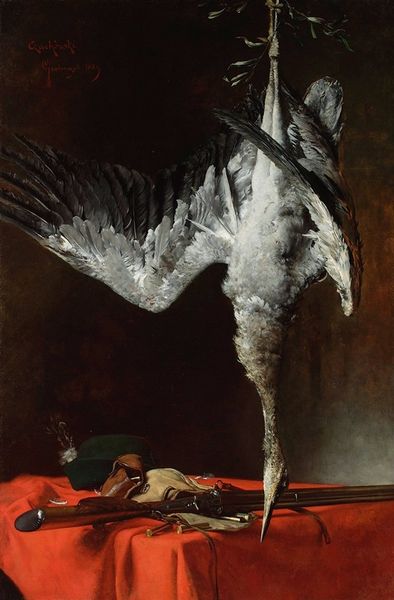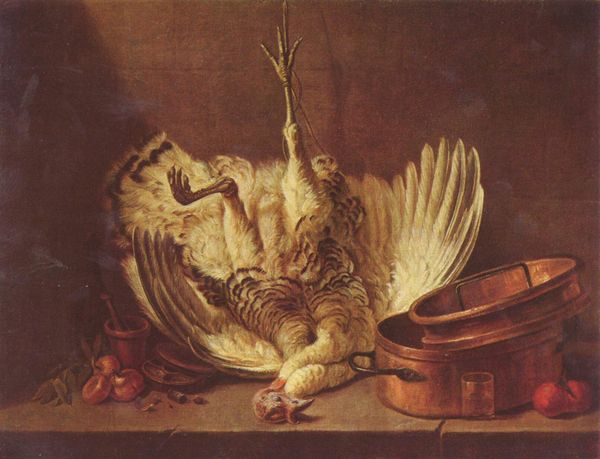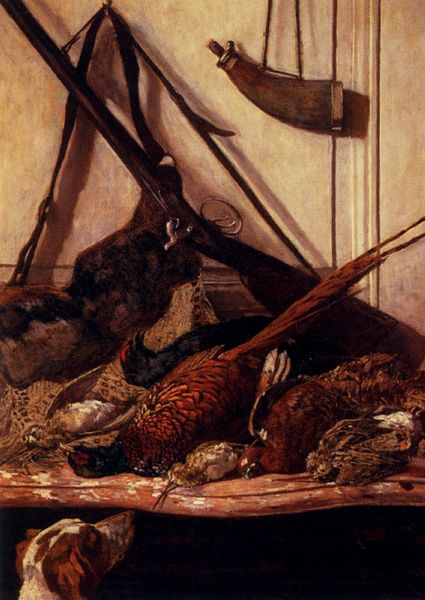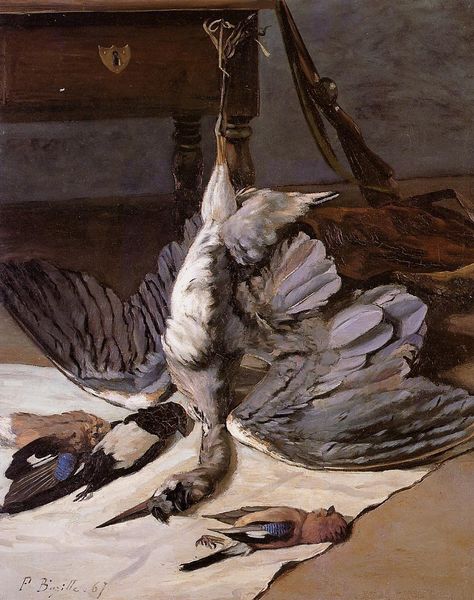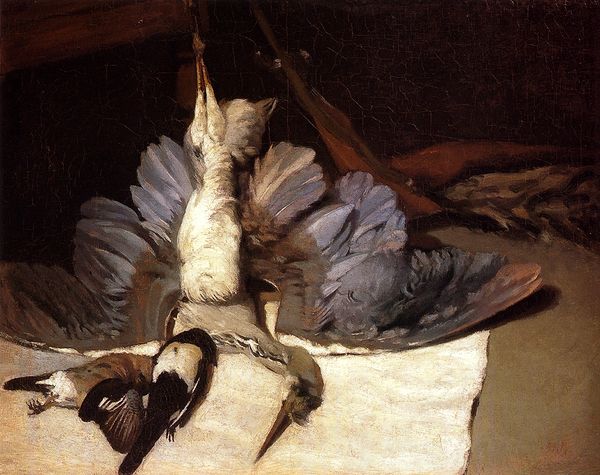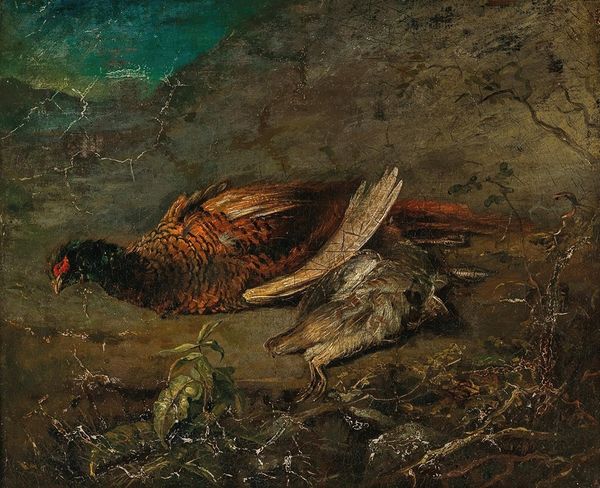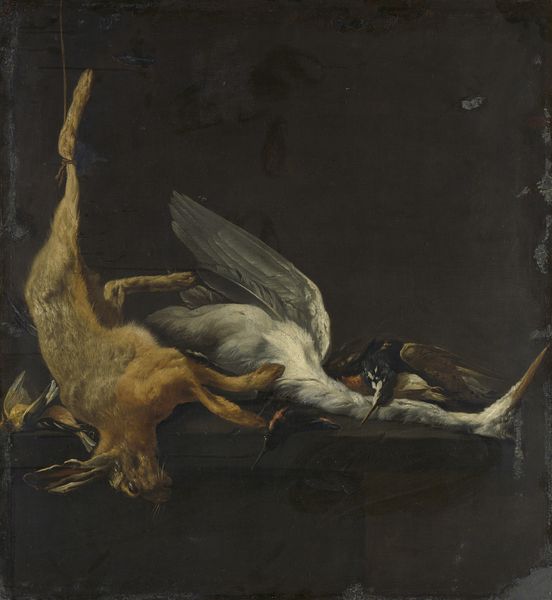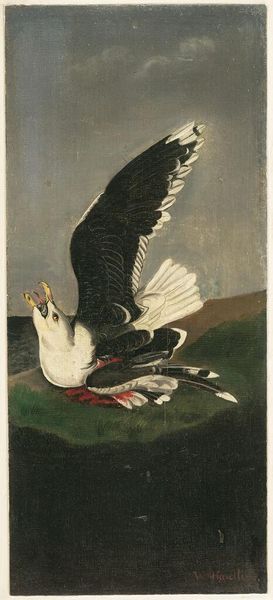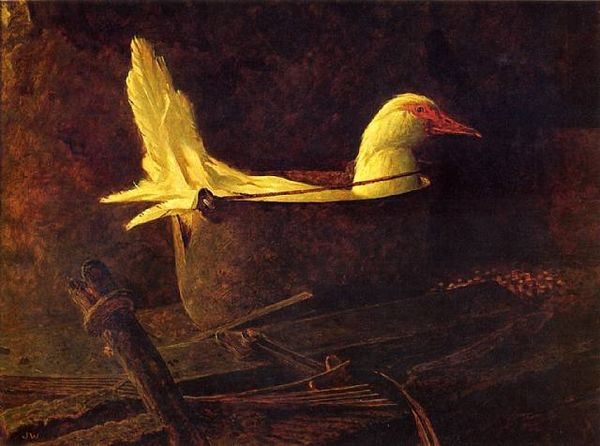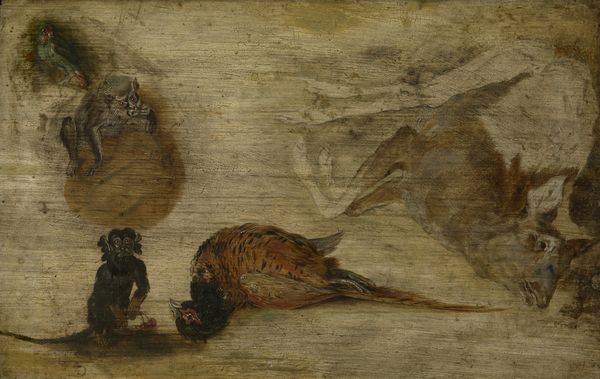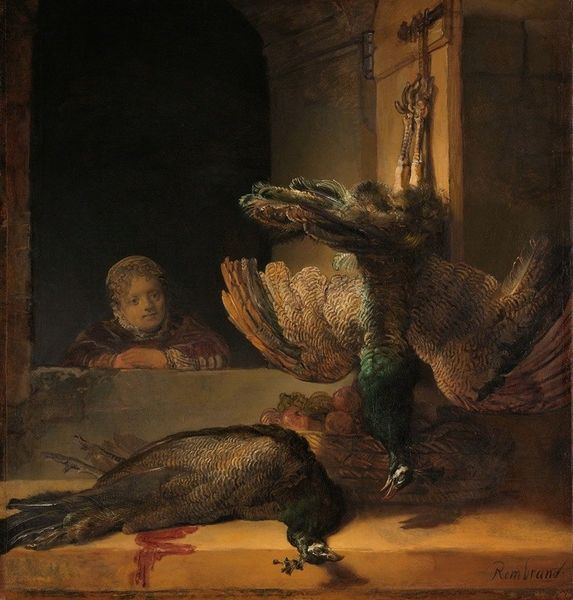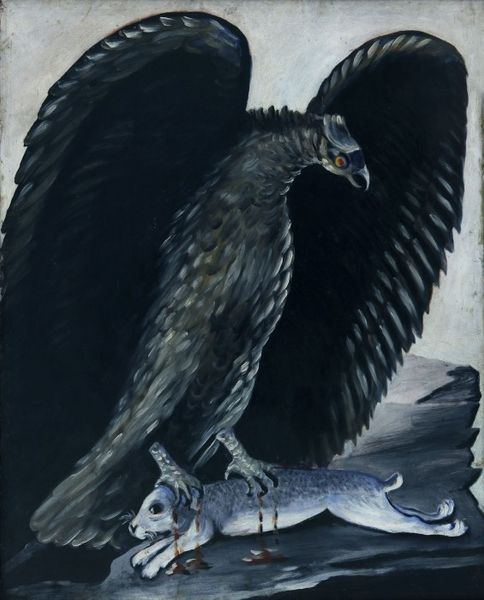
Dimensions: 45 x 63 cm
Copyright: Public domain
Curator: Right, let's talk about this…rather blunt image. Here we have "Dead Turkey," created by Francisco de Goya around 1812. It’s an oil painting currently held in the Museo del Prado in Madrid. Editor: Morbid! Immediately, it’s just so unapologetically…dead. No artifice. Dark background, stark lighting—bam!—a dead turkey. There’s a kind of raw honesty that just grabs you, a brutal sort of truth telling. Curator: It’s an interesting one because, generally, we understand Goya through a political lens, or in the realm of portraiture and larger history painting, so in relation to the conventions of romanticism this dead bird is a bit of an anomaly. It seems removed from the drama, and larger conflicts typically represented by the artist. It feels deliberately… ordinary. Editor: Ordinary death? I think Goya maybe invites us to pause and *feel* mortality without the distancing filter of grand historical narratives. The drooping wings, the splayed feet – there's no poetry here, just unadorned being, or rather, non-being. Isn't there a universality to seeing our end reflected in this very prosaic way? Curator: Perhaps it's commentary on excess. During this time Spain saw immense disparities between the wealthy and the poor, and paintings like these challenge the viewer to assess how material inequalities permeate even their plates. Even more simply though, he’s playing with still life traditions and their symbolic laden depictions of luxury. Instead, here the bird appears rather… lonely in its presentation. Editor: It is lonely, almost pitiful, and certainly anti-heroic. Makes you think, doesn’t it? Not just about turkeys, or even dinner, but about how quickly grand stories turn to… well, this. This limp reality. Goya manages to use something utterly mundane to ask rather huge, even unsettling, questions. Curator: Indeed. And even when we contextualize "Dead Turkey" within histories of economic hardship and broader sociopolitical currents, it maintains this air of melancholic intimacy. It seems to invite us to consider more than a sociohistorical situation—to contemplate our place within the cyclical process of life and death. Editor: So, here's to the dead turkey, and the unexpected depths found in the humblest of subjects. Who knew poultry could pack such a philosophical punch? Curator: Cheers to that! A potent reminder that even the stillest life has a story to tell, and sometimes, the simplest image can be the most thought-provoking.
Comments
No comments
Be the first to comment and join the conversation on the ultimate creative platform.
